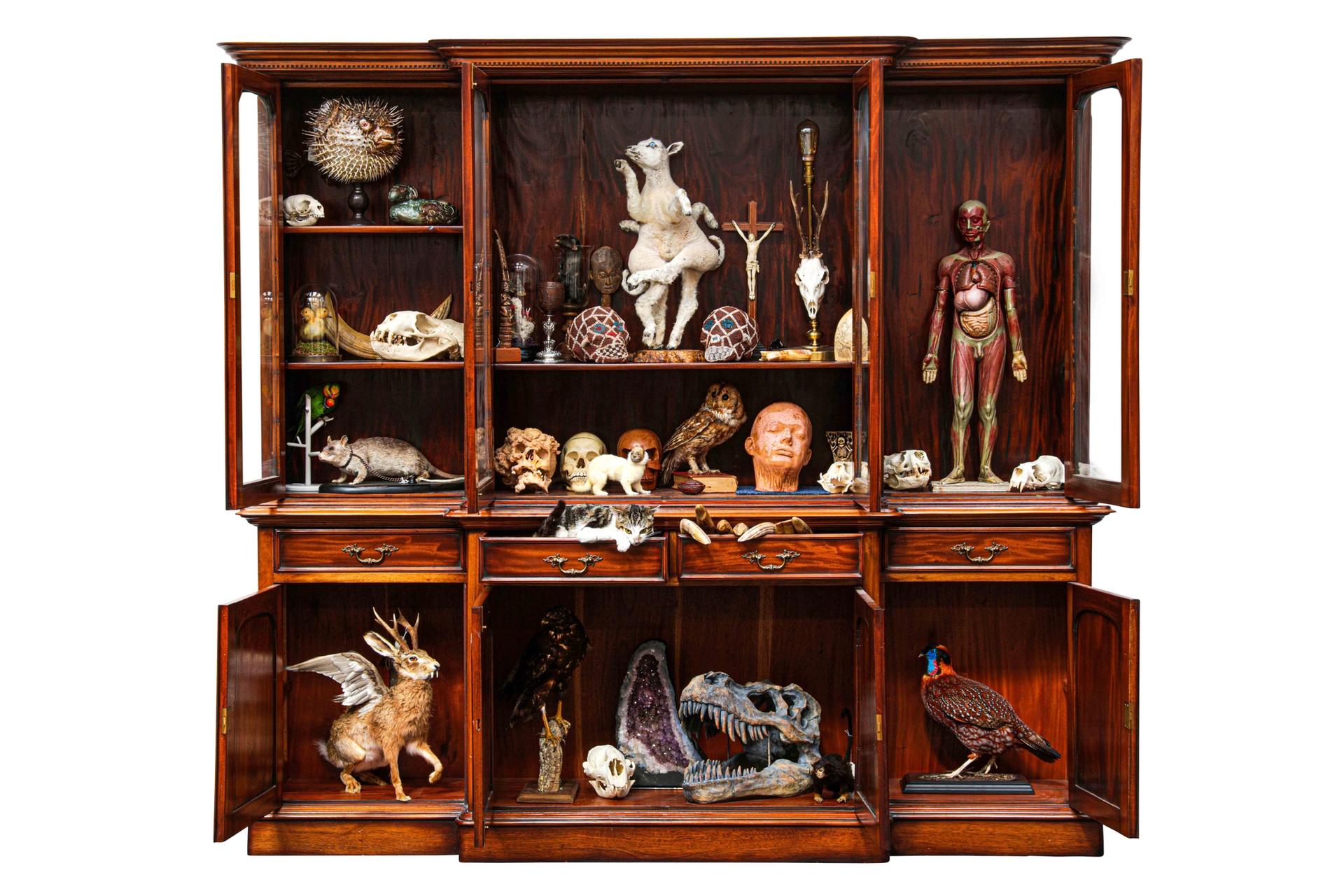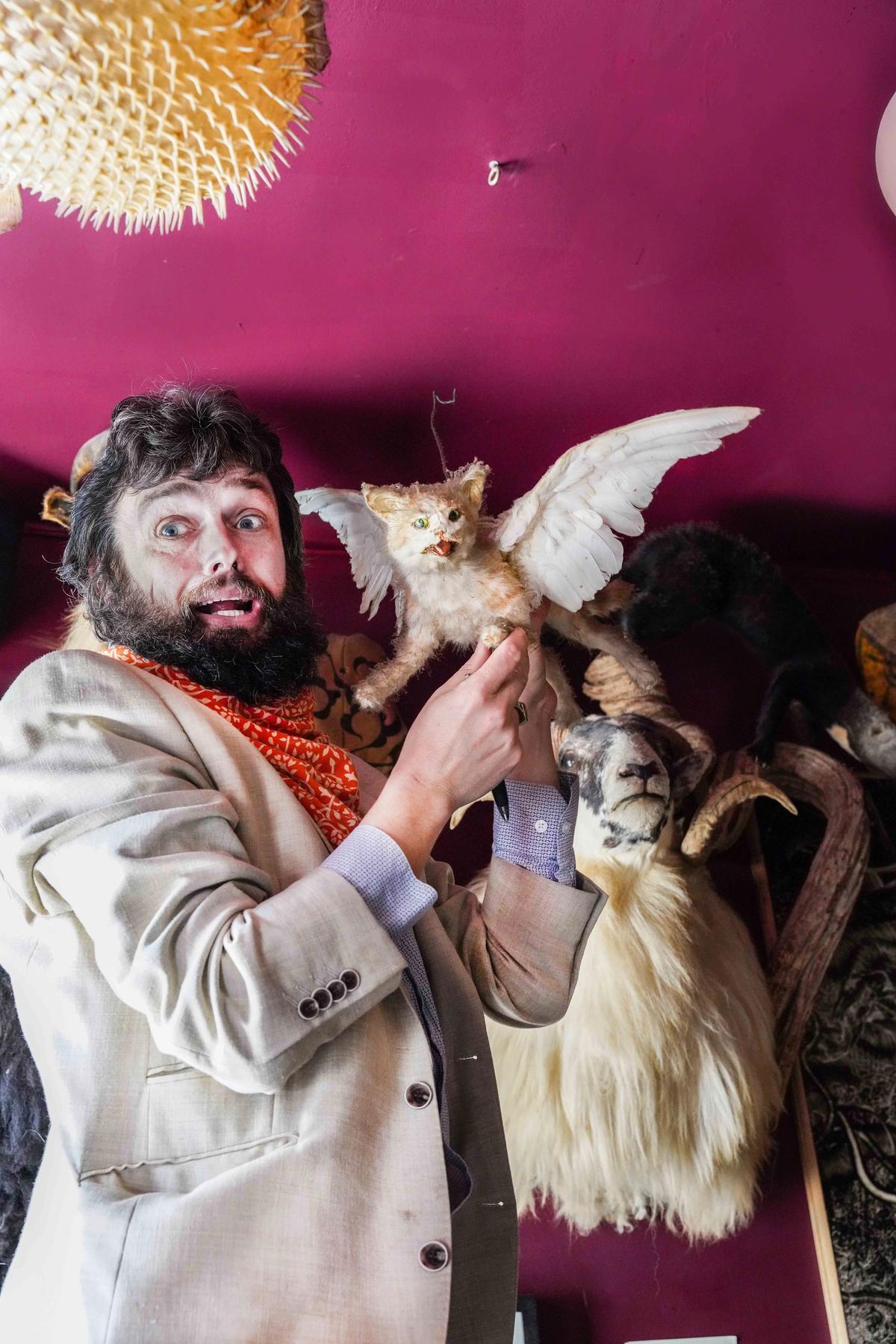Viktor Wynd is blissfully disinterested in NFTs.
"I'm sitting in a shed in rural England working in porcelain and bronze as people have done for thousands of years, and I don't like looking at screens so....I'm not actually sure what an NFT is, other than it has nothing to do with me and I don't know what I'd do with one."
Wynd is, by his own definition, a "pataphysicist, writer, curator, collector, dealer, dilettante, naturalist and antiquarian". Alongside organising extravagant parties such as masked balls and halloween parties under The Last Tuesday Society, Wynd has quite the strangest museum in London—The Viktor Wynd Museum of Curiosities, a tiny institution on Mare Street in Hackney that is full to the gunnels with everything from McDonald's Happy Meal Toys to dodo bones, old master etchings to taxidermied two-headed kittens (not the place to go on a hangover).
But, the Covid-19 pandemic has not been kind: "We've had no visitors to the museum for almost a year—even last summer, people didn't want to go into small enclosed spaces and we had barely any overseas visitors," Wynd says. "So while we got a bounce-back loan which means we're still there, we realised we have no income and won't have any customers for a while."
So, Wynd is having a sale at Chiswick Auctions, London, on 6 May to raise some funds. It is an extraordinary and occasionally downright bonkers mix of 442-lots of natural history specimens, taxidermy, works of art and even a pair of Wynds own underpants—and those of Queen Victoria. To call it a wunderkammer seems rather vanilla.

A selection of curiosities from the sale Courtesy of Chiswick Auctions
Estimates start from £50 (for Wynd's pants and a scientific educational poster relating to the urinary tract) and go up to £8,000 to £12,000 for a The Jazz Giraffe, a taxidermy baby giraffe playing a cello by Andre Robolobavich.
"Every arts organisation the world over is struggling, so this felt like the right thing to do to bring in a bit of money," Wynd says. "The museum is stuffed so full it's overflowing, so maybe it's a good thing I'm selling a few things."
What hurts to part with? "Well I do like my relics of extinct birds and my collection of pinniped (seal) skulls. And the leg bone of an Irish giant is another favourite."
How do you get hold of the leg bone of an Irish giant? "Oh well that's another tale."
The sale features some ethnographic material and, with increasing scrutiny over the ethics of collecting and selling objects from communities in, say, Africa or Oceania, Viktor says: "The stuff that interests me is the stuff that—well, in a normal world—I'd collect on expeditions to New Guinea and West Africa, buying the stuff that they're making and using today. The shrunken heads and things like that, they have good provenance." He adds: “My shrunken head is actually a white person who was obviously in the wrong place. So, I don’t think there’s any fuss about white colonials being killed and having their heads shrunk.”
What would he point out as particular highlights? "There's the striped unicorn head, there's the world's worst taxidermied flying kitten, there's all the extinct birds. There's a bezoar, an incredibly beautiful spherical hairball from an ungulate that in medieval times were seen as a sort of universal antidote and medieval treasuries have them in magnificent cases. For whatever reason, they're extraordinarily rare. Next to that is a desiccated baked potato that I forgot and left in the Aga."
There's a few of Wynd's own works too—Self Portrait as a Kitten, for example, a taxidermy animal dressed in a tuxedo (est. £1,200-£1,800).
Meanwhile, you can see part of Wynd's collection in The UnNatural History Museum display at the National Maritime Museum Cornwall in Falmouth, Cornwall, when it reopens in May. The Last Tuesday Society also organises an ongoing series of online lectures on everything from witches to psychedelics.


